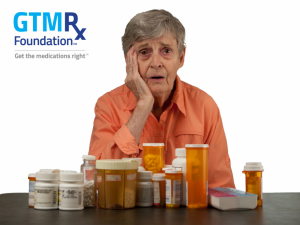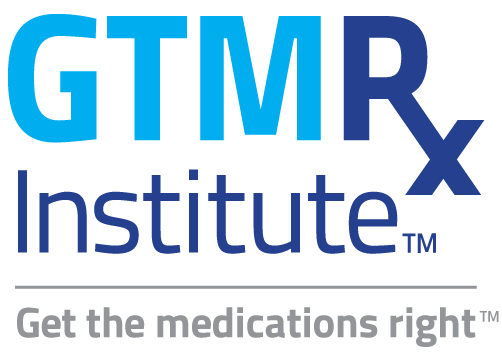Note: sources that have an asterisk require login to view the article.
In Case You Missed It!
GTMRx Membership Spotlight | Shawn McFarland, , Pharm.D., FCCP, BCACP
This month, we would like to recognize Shawn McFarland from the Veterans Health Administration. He is the co-lead of the Evidence-Based Resources Subgroup of the Practice and Care Delivery Transformation Workgroup and co-author of two important papers: “Assessing the Impact of Comprehensive Medication Management on Achievement of the Quadruple Aim Review” and “Medication Optimization: Integration of Comprehensive Medication Management into Practice.
The GTMRx Institute is comprised of over 1500 members, many of whom are champions in the world of CMM. They lead our workgroups, serve on our taskforces, publish CMM evidence and research, and guide and support our work. Our members are crucial to the work we do to advocate for a better medication management system. As a thank you, we will be starting a new membership shoutout series to highlight members and their many accomplishments. So on behalf of the Institute and those who benefit from CMM, thank you Shawn!
We need a better way to manage medications. Medicine is the main way we treat illness, but it’s also the source of avoidable misery.
Health care delivery has long been fragmented, and the growing shortage of primary care clinicians is compounding the problem. There is also a lack of communication. “We have not closed the feedback loop between specialists, primary care providers and pharmacists relating to medication use.” Adding to the problem is the aging population. More people are living longer. They have chronic diseases, and they’re taking more medications. This alone adds so much complexity to one’s ability to manage medications. At the same time, more medicines are available to take, and prescription drug costs are rising.
Read on for more.
CMM IN ACTION | The Integration of Telehealth Delivery within a Comprehensive Medication Management Practice
Considering the advantages of telehealth and the future direction of health care, it is no longer a question of if telehealth needs to be implemented into practice; rather, it is a question of how to integrate telehealth and CMM services. Core to a plan is a patient care team that works together to achieve a goal of enhancing patient-centered care and medication optimization. Outlined are essential steps to integrating telehealth services and CMM practice.
GTMRx is pleased to announce that we have launched our Advocacy Letters and Policy Documents page on the GTMRx website. Advocacy is a core component of the GTMRx Institute’s mission, and our policy positions are aimed at advancing acceptance and recognition of the importance of creating a systematic, evidence-based approach to medications and their rational use through CMM in practice. To advance our efforts, comments are submitted to the Centers for Medicare and Medicaid Services (CMS), members of Congress, the Administration, and other public sector payers (OPM) as appropriate.
This toolkit explores the benefits of CMM for individuals and for the employers who pay for benefits. Research published in March 2018 reveals the waste to the system when the wrong drugs are prescribed, drugs are skipped or drugs make people sicker which in turn leads to an estimated 275,689 deaths per year. In financial terms, there’s also a $528 billion price tag attributed to non-optimized medication use. This toolkit was developed with guidance and support from the
GTMRx Employer Toolkit Taskforce.
Use this toolkit to work with your:
- Pharmacy Benefit Managers (PBMs)
- Medical carriers
- Benefit consultants
- Solution providers (PGx, others)
- Employees
Additional resources:
- FAQs for employers as health plan sponsors here.
- PGx insight for Employers here.
Join us to be part of meaningful change
Irma, like many others, struggles as a result of our current trial-and-error approach to medication. That is why we advocate for a new, comprehensive approach to medication use and prescribing. As a non-profit 501(c)(3) and 501(c)(4) organization, the GTMRx Institute and Foundation relies on funding from our supporting members. We ask that you consider becoming a Supporting Signing Member so we can continue to provide relevant, timely resources to get the medications right!
If you’re interested in supporting the Institute or Foundation at a higher level, please contact us. Your dollars will bring about meaningful change for people like Irma.
Become a Supporting Member Today




